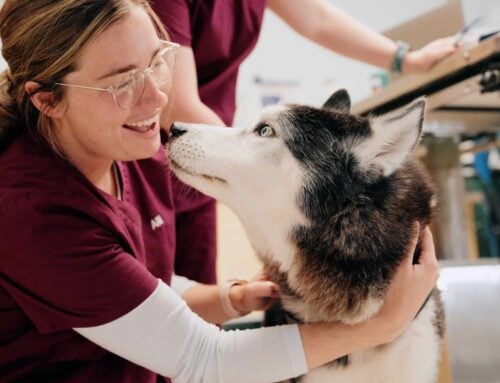Cancer is one of the most common causes of death in adult pets, and diagnosed cases are on the rise. Each year in the United States, 6 million new cases are diagnosed in dogs, and an equal number in cats. About one in three dogs will develop cancer in their lifetime, and 50% of dogs older than age 10 will die from cancer. These statistics are unsettling, but tremendous advancements in veterinary oncology now allow earlier cancer diagnoses and a better prognosis.
Early cancer detection also allows for more effective treatment and ultimately saves more lives. Learn how to identify suspicious cancer signs in your pet, and how veterinarians reach an accurate diagnosis to halt cancer in its earliest stages.
Common cancer signs in pets
Since a multitude of cancers can affect cats and dogs, knowing definitively if your pet has cancer based on their signs is impossible. However, some clinical signs may indicate a cancerous process in your pet that requires a veterinary exam.
Common cancer warning signs in pets include:
- Swollen lymph nodes — Lymph nodes are located throughout the body, but the ones easiest to spot are behind the jaw and behind the knees. While lymph nodes can become enlarged when the body is fighting infection, they can also grow during lymphoma development, which is a common form of cancer in cats and dogs.
- Abnormal lumps — Many lumps and bumps that pop up on pets are benign, such as skin tags and lipomas, but a lump that appears suddenly, grows rapidly, or changes in appearance may be cancerous.
- Weight loss — If your pet loses weight without dieting and exercising, you should find the cause, because many cancer patients lose weight.
- Vomiting or diarrhea — If your pet has chronic vomiting or diarrhea that does not resolve with a bland diet and symptomatic treatment, you should dig deeper to find the root cause. Gastrointestinal (GI) issues are associated with many forms of cancer, and especially with GI tract tumors.
- Unexplained bleeding — Bleeding from the mouth, nose, genitals, or anus indicates a serious problem, especially if your pet has not experienced recent trauma. A cancerous mass or process can trigger unexplained bleeding.
- Coughing — A dry, non-productive cough is the most common lung cancer sign, and many cancers metastasize to the lungs. However, pets cough for many reasons, so a full diagnostic workup is needed to determine if cancer is producing the cough.
- Lameness — Lameness, limping, or signs of pain and decreased mobility can indicate bone cancer, which is common in large- and giant-breed dogs.
- Oral odor — Oral tumors that cause a foul order that differs from normal doggy breath are relatively common in pets. A mass in the mouth or throat can cause your pet to struggle to chew and swallow.
- Difficulty urinating or defecating — Straining to urinate or defecate, or the presence of blood in the urine or feces, are possible signs of a tumor in the urinary or GI tract.
- Non-healing sores — When the immune system is compromised and already working overtime—such as with cancer—wounds and sores can be exceptionally slow to heal.
Diagnostic tests for cancer in pets
If you spot any cancer warning signs in your pet, the next step is to schedule an appointment with your Safe Harbor Animal Hospital veterinarian. During your pet’s appointment, we may perform the following diagnostic tests to determine if they truly have cancer, and to stage the disease, if possible:
- Physical exam — Assessing your pet’s vital signs and outside appearance can guide our diagnostic testing path.
- Blood work — Blood work will evaluate your pet’s organ function and quantify various blood cell types that can indicate infection, inflammation, or cancer.
- Digital imaging — Many cancers can metastasize to the lungs, liver, spleen, and kidneys, so X-rays to check for the initial tumor and metastases are critical for diagnosing and staging the disease. Additional imaging, like an ultrasound, CT scan, or MRI, may also be helpful, depending on the tumor’s location and type.
- Biopsy — A sample taken from an enlarged lymph node or suspicious mass that shows cancerous cells when viewed under a microscope can help make a definitive diagnosis.
After a cancer diagnosis has been confirmed, a treatment plan for your pet that may include surgery, radiation, chemotherapy, or palliative care will be developed.
Although the mere thought of your beloved pet having cancer is heartbreaking, gaining a definitive diagnosis is crucial to their treatment plan and prognosis. If you suspect your furry pal is exhibiting cancer warning signs, call or book online to schedule an appointment with our Safe Harbor Animal Hospital team as soon as possible.









Leave A Comment